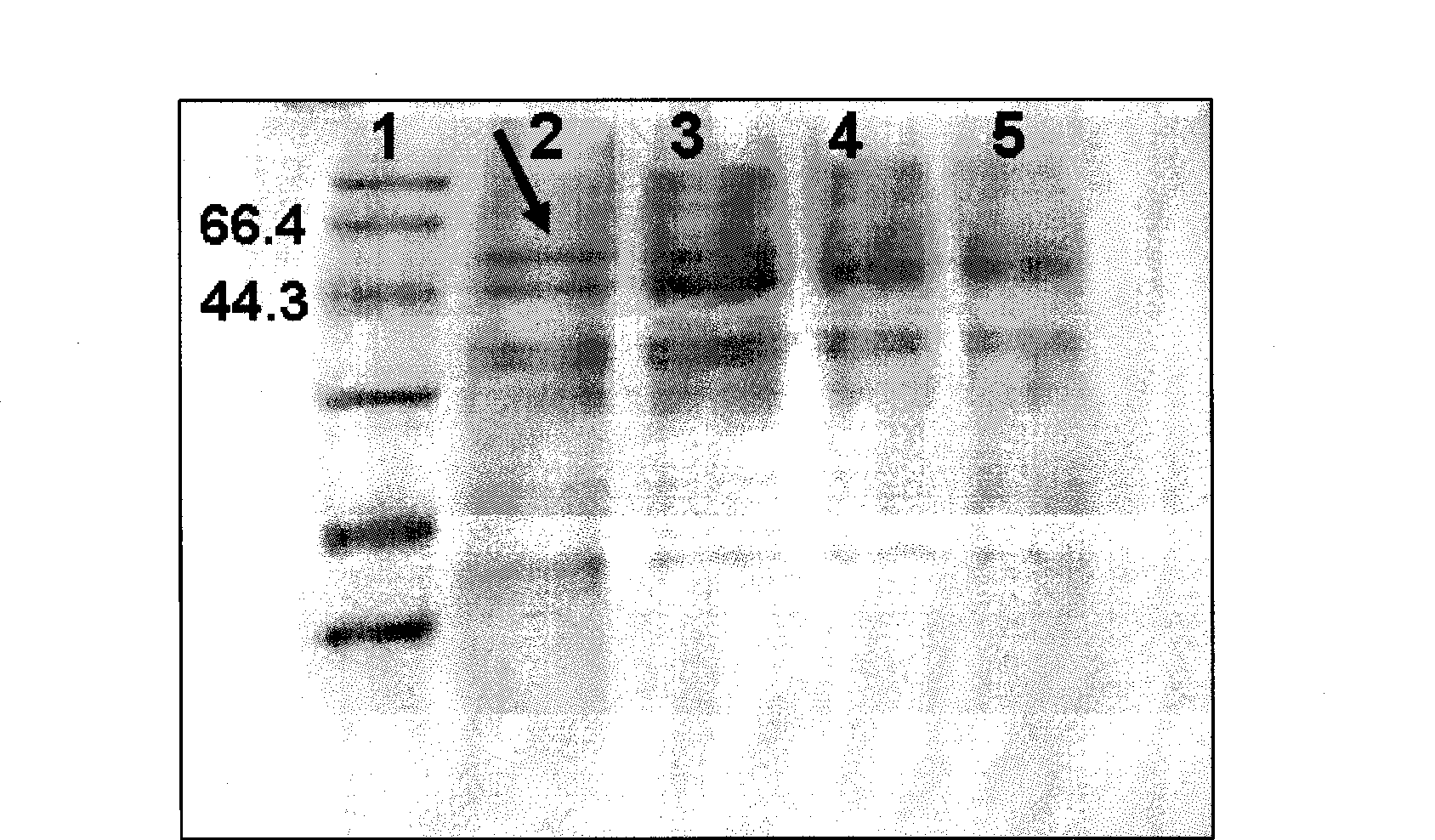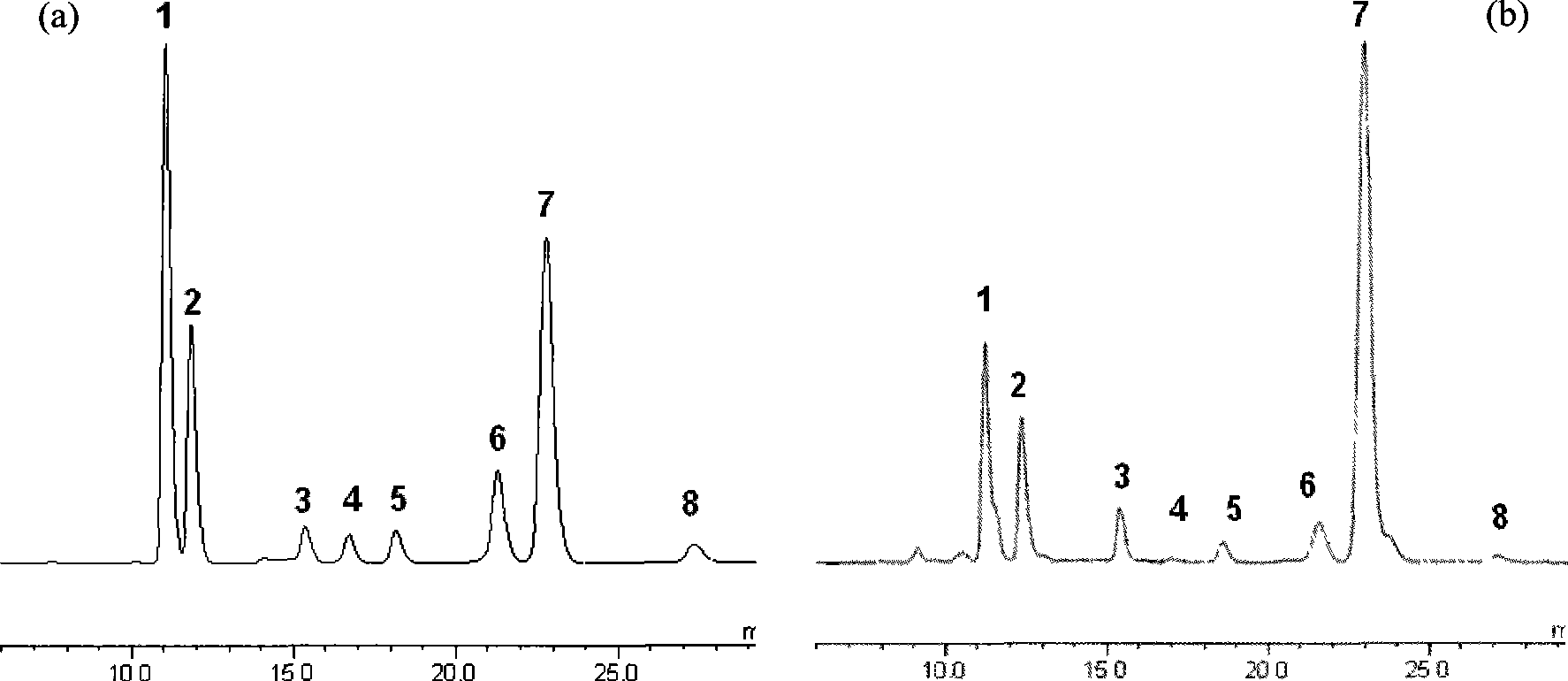Transformation microbe generating 3-hydracrylic acid, construction method and application thereof
A hydroxypropionic acid and microorganism technology, which is applied in the field of transforming microorganisms producing 3-hydroxypropionic acid and their construction to achieve the effects of high stability, inhibiting miscellaneous bacteria and reducing the phenomenon of miscellaneous bacteria
- Summary
- Abstract
- Description
- Claims
- Application Information
AI Technical Summary
Problems solved by technology
Method used
Image
Examples
Embodiment 1
[0031] Example 1: Klebsiella pneumoniae ATCC25955-3-pUC18-aldH-Tet R build
[0032] (1) Cloning of the gene aldA: According to the sequence (SEQ ID No.2) of the aldA gene in Escherichia coli K12 published by Genebank, the primers required for synthetic PCR were designed:
[0033] P1 (SEQ ID No. 4): 5 1 -GAATTCATGGGTAAGCTGGAACGCATTGC-3 1
[0034] P2 (SEQ ID No. 5): 5 1 -TCTAGATCAGGCGTTCCCTTTTTCTTTTA-3 1
[0035] Introduce EcoR I and Xba I restriction sites at both ends of the primers respectively, and use the genomic DNA of Acetobacter acetobacter as a template to complete the PCR reaction: PCR reaction conditions: denaturation at 95°C for 5min, 30 cycles at 94°C for 30sec, 52°C for 30sec, and 72°C for 1min40sec , and then extended at 72°C for 3 minutes, the obtained PCR product was confirmed by electrophoresis analysis, purified by the PCR product purification kit, connected to the pMD18-simple-T vector, and sequenced, and the recombinant pMD18-simple was digested with E...
Embodiment 2
[0040] Example 2: Recombinant plasmid pUC18-aldH-Tet R Transform Klebsiella pneumoniae25955 (obtained from ATCC, strain number: Klebsiella pneumoniae ATCC25955)
[0041] The recombinant plasmid pUC18-aldH-Tet was R To transform Klebsiella pneumoniae Klebsiellapneumoniae 25955, the electroporation condition parameters are: voltage 2.5kV, resistance value 200Ω, pulse time 4.5msec. After the transformation by electric shock, spread the electric shock-treated Klebsiella pneumoniae ATCC25955 on the LB medium containing 40 μg / mL tetracycline to obtain a positive clone Klebsiella pneumoniaeATCC25955-3-pUC18-aldH-Tet R .
Embodiment 3
[0042] Example 3: Engineering bacteria Klebsiella pneumoniae 25955-3-pUC18-aldH-Tet R Plasmid stability study
[0043] Inspection method: Pick a single colony from a fresh transformation plate and inoculate it into 3 mL of tetracycline-free LB medium, cultivate the seeds at 37°C for 12 hours as seeds, and replant for 24 hours, that is, 20 generations of seeding, 5 times of replanting, That is 100 generations, spread the above bacterial solution on the LB plate without antibiotics, select 100 single colonies from it, and place them on the plate with and without tetracycline, culture at 37°C for 12-16h, and compare the effect of adding and not adding tetracycline. The stability was determined by the number of colonies on the plate to which tetracycline was added.
[0044] Investigation results: after 100 generations of breeding, the stability of the plasmid is 99%.
PUM
| Property | Measurement | Unit |
|---|---|---|
| tensile strength | aaaaa | aaaaa |
Abstract
Description
Claims
Application Information
 Login to View More
Login to View More - R&D
- Intellectual Property
- Life Sciences
- Materials
- Tech Scout
- Unparalleled Data Quality
- Higher Quality Content
- 60% Fewer Hallucinations
Browse by: Latest US Patents, China's latest patents, Technical Efficacy Thesaurus, Application Domain, Technology Topic, Popular Technical Reports.
© 2025 PatSnap. All rights reserved.Legal|Privacy policy|Modern Slavery Act Transparency Statement|Sitemap|About US| Contact US: help@patsnap.com



